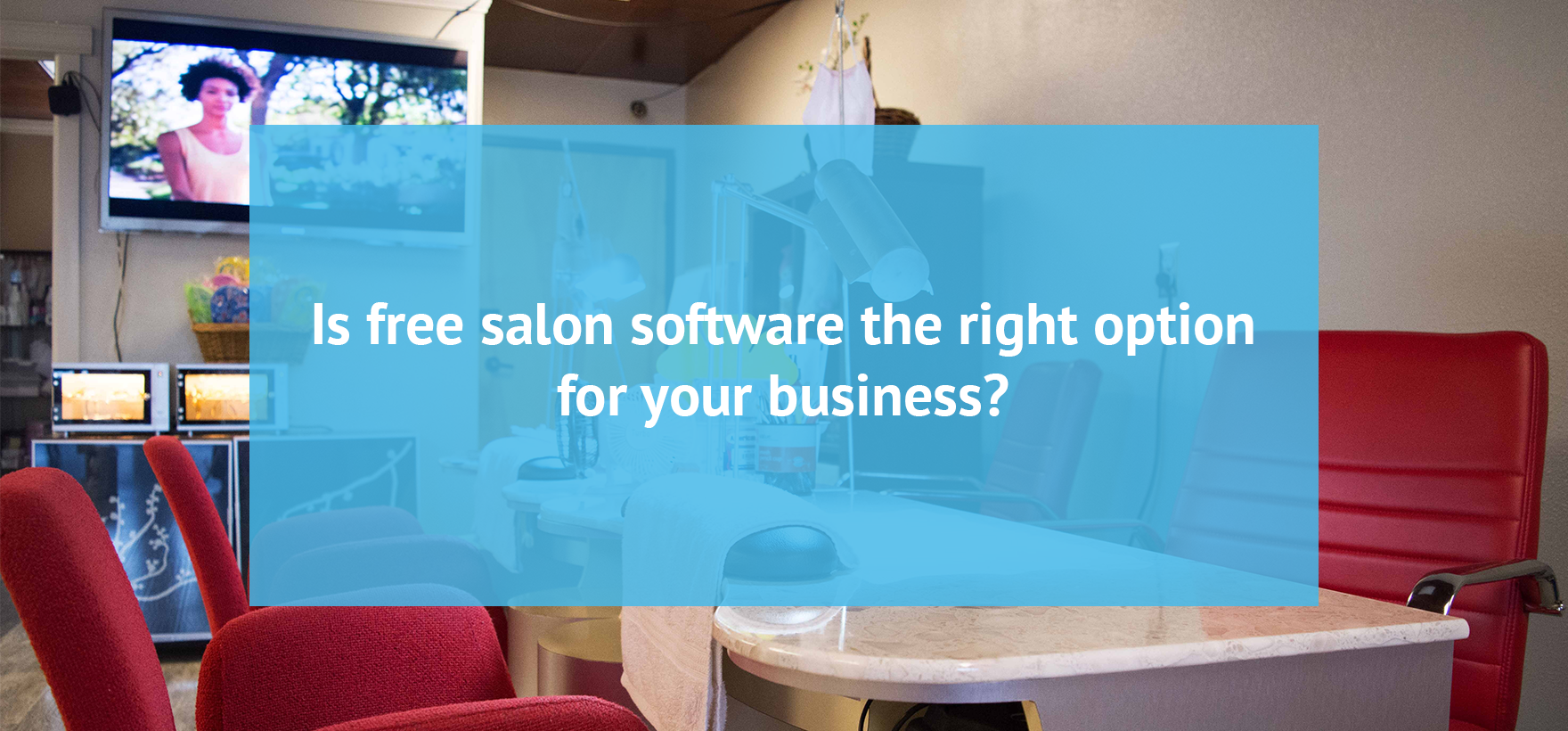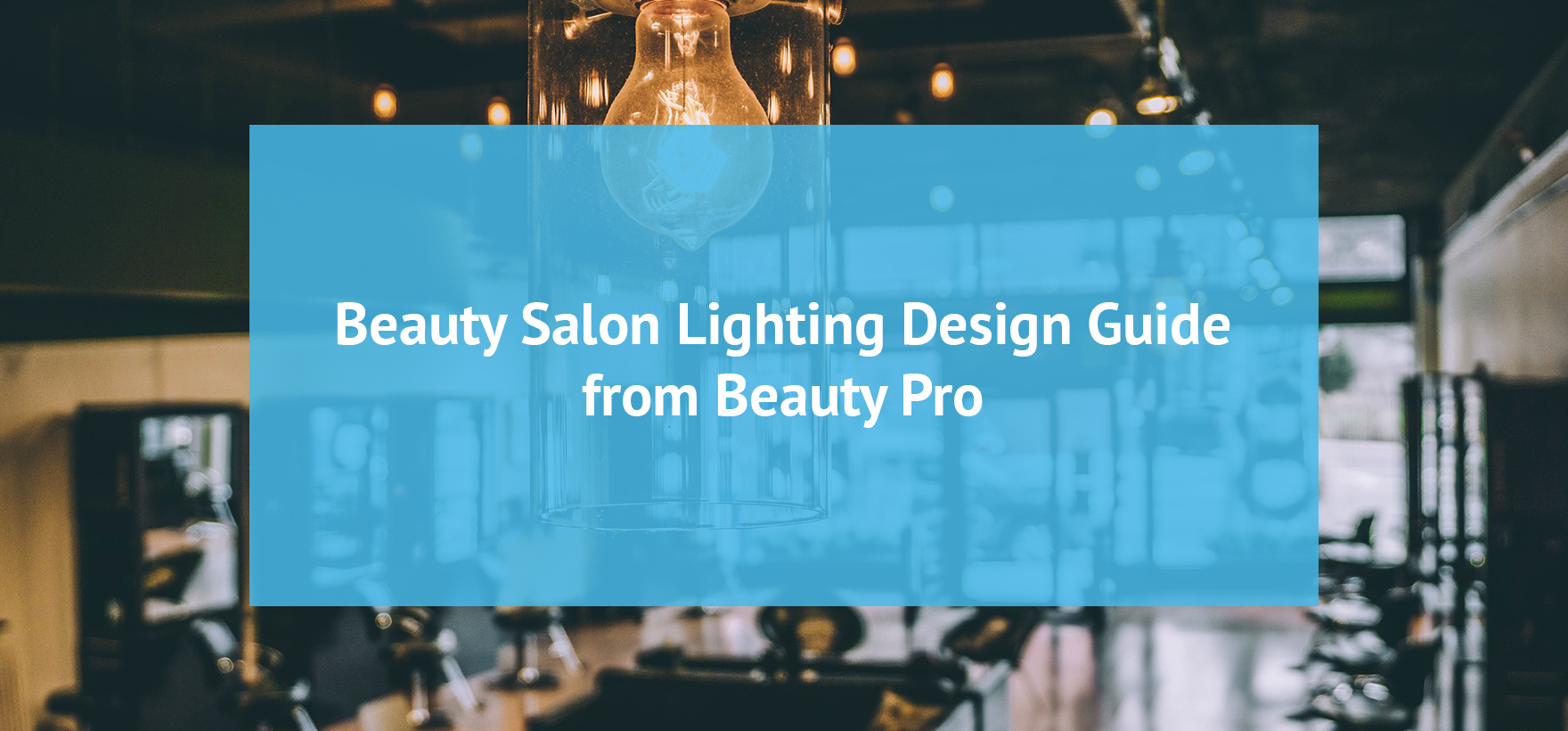
Beauty Salon Lighting Design Guide from Beauty Pro
 21343
21343
Talking about make-it or break-it aspects of a salon business — beauty and hair salon lighting design is one of them. It can truly affect the mood of your clients, their first impression of your salon, and your employees’ efficiency.
If you find it hard deciding on your beauty salon lightning, this concise guide will help you choose the best lighting for a hair salon and take away a few beauty and interior hair salon lighting ideas.
The importance of good lighting in a beauty salon
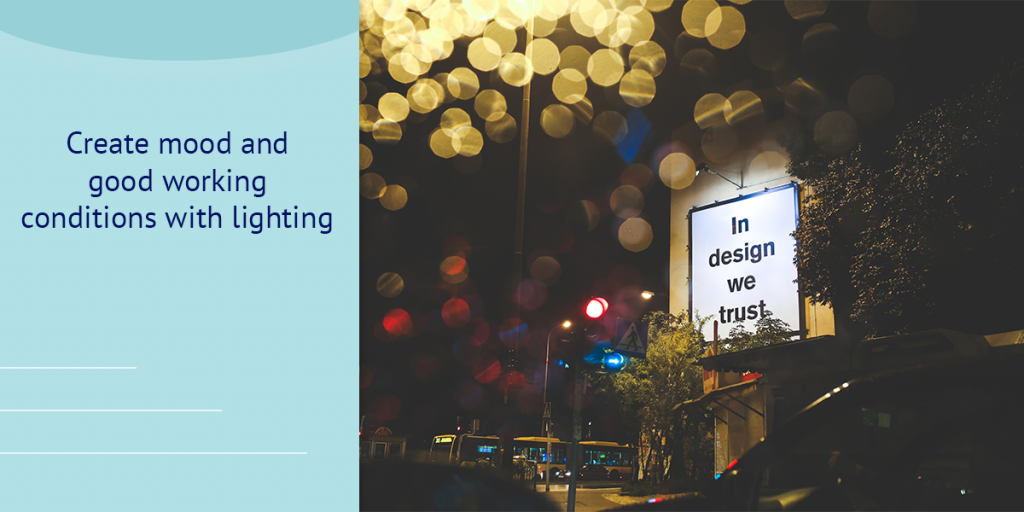
Lighting in a beauty salon has a very practical use, more than in any other room or building. It helps your employees work, see the customers clearly, and make sure they do everything well. Thus, it directly influences the quality of work — not even the best professional hairstylist, nail expert or makeup artist can do their work in bad lighting. Not to mention it’s bad for their vision. There’s also a psychological factor: the lack of natural light at the reception desk, for example, makes it harder to focus on tasks and it can also negatively influence sales.
Hair salon lightning also creates the mood and the atmosphere in your salon. For example, we don’t use bright, cold light in a beauty salon since it is more associated with a clinic. Warm, dimmed light, on the other hand, is more relaxing for the mind and body, and that’s what clients are looking for in any salon (except maybe express services).
People go to a salon to feel and look good. Did you know that good lighting can help in this regard, too? Properly set lighting makes you look better in a mirror and renders the colors as close to what they are as possible. It also helps your professionals do their work with utmost precision. Just imagine what a disaster it would be otherwise if your employees couldn’t see what they were doing.
Hair salon lightning design is impossible without a few technical terms, so let’s talk about the types of lighting and the common indicators, so you know what your interior designer is talking about.
Types of lightning:
- Ambient — the primary source of lighting in your salon, usually created with dimmers and recessed ceiling lights.
- Task — additional sources of lighting that will help at work, like a lamp on the reception desk or a floor lamp at the color station, or magnifying lamps cosmetologists use.
- Accent — used to attract attention to something in your salon, like a product display or professional certificates.
- Vanity — gives an even source of lighting around mirrors and reduces shadows, which helps hair and makeup artists work on a client.
Common recommendations towards lightning design indicators:
It would be great if all light bulb packaging described what kind of hair salon lighting you could get in simple terms, like “good for the reception area” or “good for a beauty salon”. As is, it only offers a set of numbers and letters, so this is what you should look out for:
- Color rendering index (CRI) — the capacity of a light source to reflect the colors — should be 86 or above.
- Optimum color temperature — 4000-6000 K (or Kelvin), which is close to “daylight white” or “natural white”.
- Illumination level — varies from 300 to 700 lux, depending on the lighting source and section in or type of a salon (more information down below).
Note: CRI is a very important parameter. Just imagine a situation where a client is happy with their new hair color only until they step outside the salon. If the light bulbs in your salon don’t render color properly, hair color, or even makeup, won’t look the same in daylight or in another room.
Lighting design guidelines
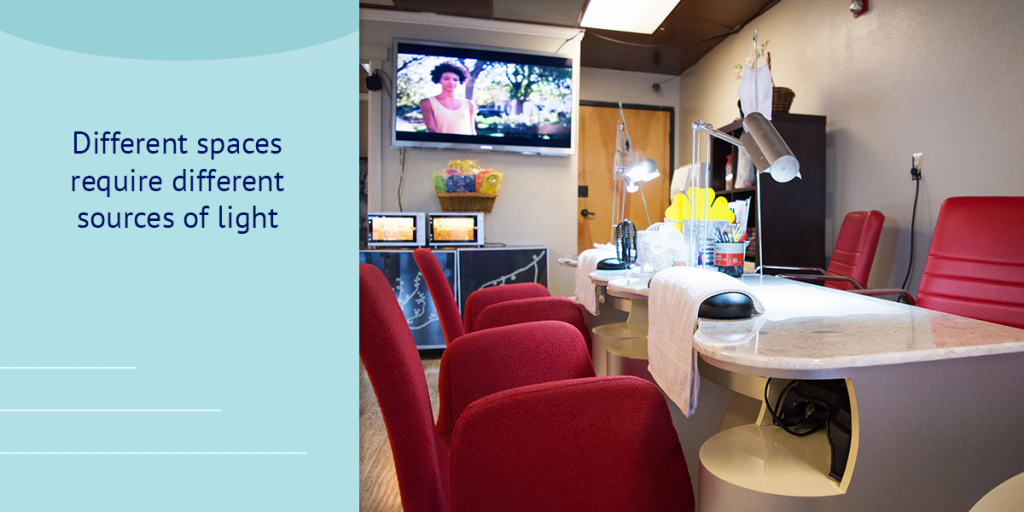
Your beauty and hair salon lighting design project should be ready before you start renovations and incorporated in the general interior design. It’s important to know what kind of lighting goes where from the very beginning since it influences the interior plan, like the positioning of doors, sockets, furniture, and decorations. For example, if you need space for floor lamps, ceiling fixtures for overhead lighting at the reception desk or even sockets for desk or vanity lighting it should be in the plan.
The most important indicator for beauty salon workstations, as it’s already been mentioned, is CRI. The higher the better, but it cannot be lower than 80. Other than that, different sections or types of beauty salons require different sources of lighting, and here is what you should take into account:
- Reception. It’s the first thing clients see when they enter your salon, but it’s also a purely working space for your administrators. The lighting here should be bright and warm since blue or white light is proven to be bad for the vision. It is common practice to use pendant lights over the desk or desk lamps. In technical terms, it should be 200-400 lux.
- Waiting area. The lighting here plays more of a psychological role. It should be warm and relaxing, it could even be darker than the rest of the salon. Although there shouldn’t be much contrast between the spaces in your salon — it’s not pleasant to enter a brightly lit room after being in a dark space.
- Hairstylist workspace. Hair salon lighting design should be quite bright but diffused, and it certainly shouldn’t be neon, so your professionals don’t strain the eyes during long hours of work. Moreover, it is best to choose tones in the interior and lighting that is closest to natural colors and daylight. It will allow your stylists to work without hindrance (for example, choose the right shade of hair color). Plus, think of adding vanity lights.
- Nail room. Manicures, pedicures, and especially nail art require task lighting. So, a nail parlor or section in a beauty salon should have two sources of lighting: a general one producing 400 lux, like overhead recessed or pendant lights, and task lights of up to 700 lux (e.g., adjustable desk and floor lamps). The purpose of task lighting is for the professional to clearly see what they are doing.
- Beauty therapy. Cosmetology and massage rooms are usually softer and dimmed, varying from 300 to 500 lux. It’s good to have several sources of lighting here as well: 1) bright lights for cleaning the space, 2) warm dimmed lighting for when the client is resting, 3) magnifying lights for a cosmetologist to see the task area (skin on the face and body), and 4) electronic candles for massage sessions.
3 ideas of a good hair salon lighting design

Here are some of the best interior hair salon lighting ideas you can use at your salon:
1. Warm lighting and well-lit workstations create a positive environment for both clients and employees.

Source: Pinterest
2. In this salon, the backlit mirrors and target lights flatter the complexion. The salon also has proper lighting for the reception and product display.
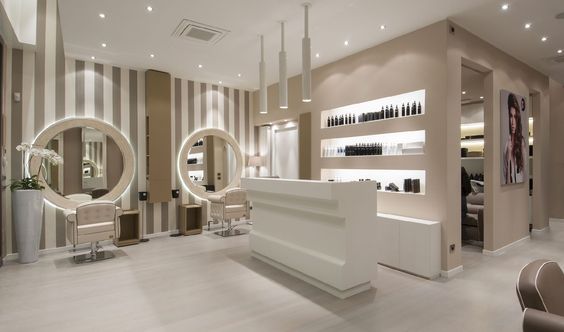
Source: Pinterest
3. Aside from the distinctive interior, barber shops require proper lighting like any other hair salon. Look at how this barbershop incorporated warm target lights around the interior and product display with brightly lit workstations.
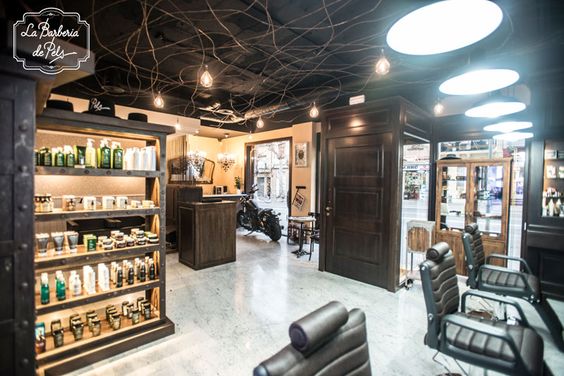
Source: Pinterest
Hair salon lighting tips
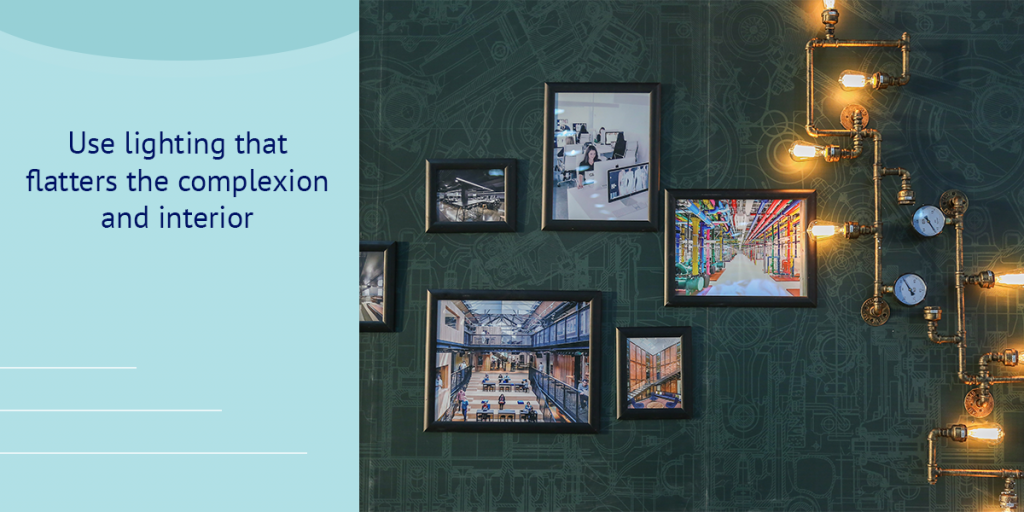
- The best lighting for a hair salon is the one that flatters face complexion of your clients and renders colors accurately. For that, you should use warm temperature bulbs with high CRI, and put lights around the mirror to eliminate shadows on the face.
- Make sure that your hair salon lighting design flatters the interior. Go for something in the middle, not too dark or bright, not too white or warm.
- Use proper lighting on the product display. Don’t overlook this aspect. Accent lighting will make the products pop on the display and attract customers’ attention. Although only if you put each product in a spotlight. A backlit display looks nice but the products might get lost in it.
- Use eco-friendly LED lights. They seem more expensive, but they are actually more energy efficient and will save you money in the long run. It’s one of the most useful hair salon lighting tips.
- Use separate lighting systems in different areas of your salon. For example, hair and coloring workstations should simulate daylight (CRI close to 100), while the massage room can benefit from dimmed lights or electronic candles.
- The waiting area would also benefit from subdued recessed light or wall scones, but if you offer any magazines, the lighting should be safe for reading.
- Think of the bathroom lighting as well. If the general salon space is dimmed and the bathroom is brightly lit, the change in brightness would be strenuous to the eye.
If you like our hair salon lighting ideas and want more tips on starting and managing a beauty salon, visit our Blog.
